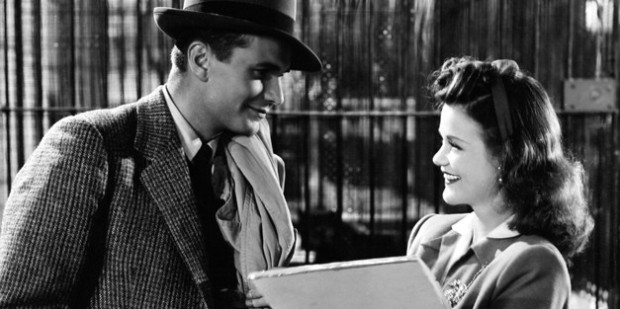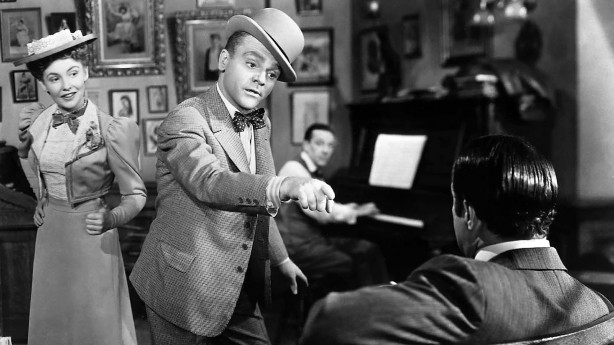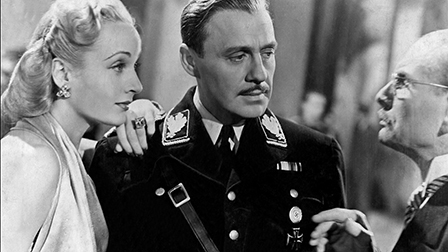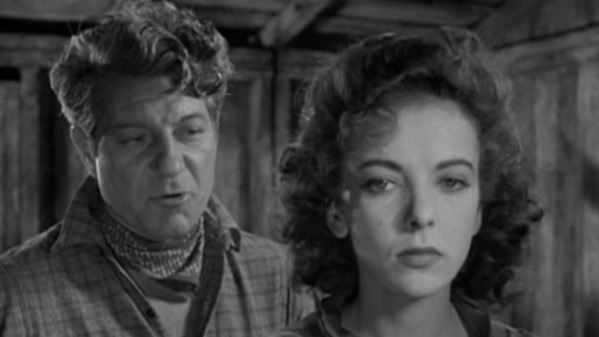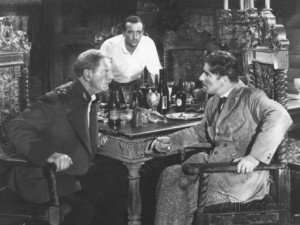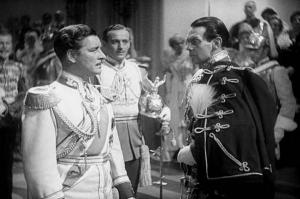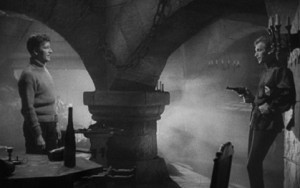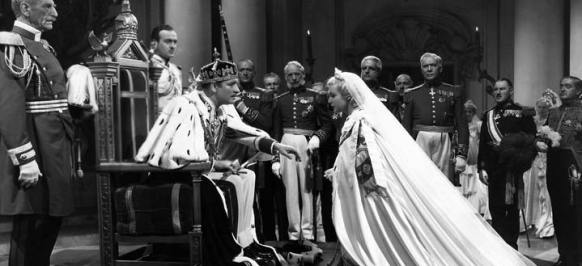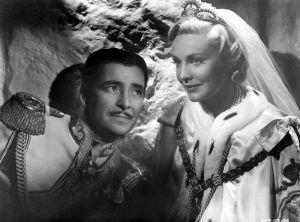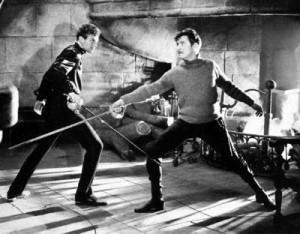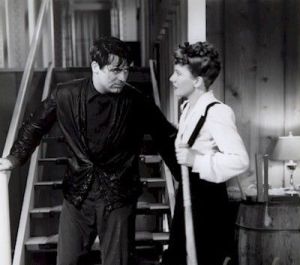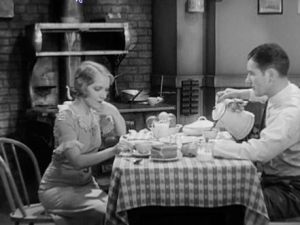It is time, once again, to delve back into the past and see how things look. Ever since 1928, the Academy Awards have been held, showcasing the greatest achievements in filmmaking.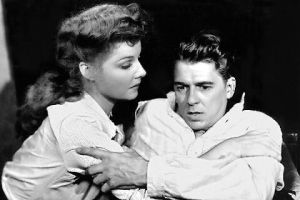 It is years later, however, that both audiences and critics are able to really examine all the movies, and it is then that the power of hindsight helps us to determine which films are truly the best. When putting these lists together I follow the same Best Picture criteria that is in place today (because I think it works brilliantly), meaning that there have to be five nominees, and can’t be more than ten. When looking back into the golden age of cinema it’s easy to come up with ten nominees, in fact it wouldn’t be hard to pick 15 or 20, but doing it this way separates the “greats” from the “goods”. This also gives the opportunity to look at smaller films that were perhaps panned upon their initial release, but have grown in popularity over the years. Sometimes there are foreign language films that weren’t seen by enough people, sometimes an animated film becomes a “classic”. There are so many things that time can change, but the power of hindsight helps clear everything up.
It is years later, however, that both audiences and critics are able to really examine all the movies, and it is then that the power of hindsight helps us to determine which films are truly the best. When putting these lists together I follow the same Best Picture criteria that is in place today (because I think it works brilliantly), meaning that there have to be five nominees, and can’t be more than ten. When looking back into the golden age of cinema it’s easy to come up with ten nominees, in fact it wouldn’t be hard to pick 15 or 20, but doing it this way separates the “greats” from the “goods”. This also gives the opportunity to look at smaller films that were perhaps panned upon their initial release, but have grown in popularity over the years. Sometimes there are foreign language films that weren’t seen by enough people, sometimes an animated film becomes a “classic”. There are so many things that time can change, but the power of hindsight helps clear everything up.
When it comes to 1942, there are some release dates that need to be mentioned, just to make things clear. For starters, the David Lean film, “In Which We Serve” 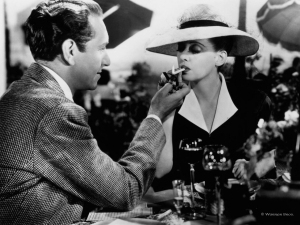 was released in the UK on September 17th, 1942, and the United States on December 23rd, 1942. I don’t know which technicality made it eligible for the Academy Awards in 1943 instead of 1942 (it was a Best Picture nominee in ’43), but for the sake of this article, I am going to consider it a film from 1942. Likewise there is another British film, “The 49th Parallel” aka “The Invaders”, which was released in the UK November 24th, 1941, but in the United States April 15th, 1942, making it eligible for a Best Picture nomination (which it received) in 1942. For our purposes, however, we will consider this a film from 1941.
was released in the UK on September 17th, 1942, and the United States on December 23rd, 1942. I don’t know which technicality made it eligible for the Academy Awards in 1943 instead of 1942 (it was a Best Picture nominee in ’43), but for the sake of this article, I am going to consider it a film from 1942. Likewise there is another British film, “The 49th Parallel” aka “The Invaders”, which was released in the UK November 24th, 1941, but in the United States April 15th, 1942, making it eligible for a Best Picture nomination (which it received) in 1942. For our purposes, however, we will consider this a film from 1941.
To start with, here are the ten Best Picture nominees from 1942:
- “The Invaders” aka (“The 49th Parallel”)

- “King’s Row”
- “The Magnificent Ambersons”
- “Mrs. Miniver”
- “The Pied Piper”
- “The Pride of the Yankees”
- “Random Harvest”
- “The Talk of the Town”
- “Wake Island”
- “Yankee Doodle Dandy”
Those are some pretty impressive films!
Let’s address each of these, one by one. “The Invaders”, as discussed before, was released in 1941, so no longer can be eligible. “King’s Row” is a good drama, but today doesn’t hold up quite as well. Lot’s of drama and good performances, but ultimately it is a bit of a letdown. Orson Welles’ follow-up to “Citizen Kane” 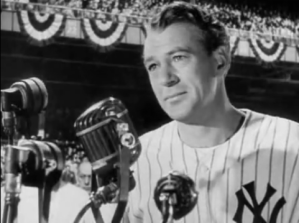 was the enormous undertaking of “The Magnificent Ambersons”, which although did receive some negative comments in 1942, still managed to gain a Best Picture nomination. Oddly enough, with the passing years it is regarded higher today than at any time in the past. “Mrs. Miniver” was the Best Picture winner in 1942, and for my money, it deserved to be. What a fantastic film, filled with memorable performances and unparalleled beauty. “The Pied Piper”, on the other hand…not so much. It’s still a good movie, but I don’t think it has lived up to that coveted Best Picture status. “The Pride of the Yankees” is a wonderful movie for many reasons. Gary Cooper, Walter Brennan, and Teresa Wright are all amazing, and the story of Lou Gehrig is an important one, that director Sam Wood does a beautiful job of telling.
was the enormous undertaking of “The Magnificent Ambersons”, which although did receive some negative comments in 1942, still managed to gain a Best Picture nomination. Oddly enough, with the passing years it is regarded higher today than at any time in the past. “Mrs. Miniver” was the Best Picture winner in 1942, and for my money, it deserved to be. What a fantastic film, filled with memorable performances and unparalleled beauty. “The Pied Piper”, on the other hand…not so much. It’s still a good movie, but I don’t think it has lived up to that coveted Best Picture status. “The Pride of the Yankees” is a wonderful movie for many reasons. Gary Cooper, Walter Brennan, and Teresa Wright are all amazing, and the story of Lou Gehrig is an important one, that director Sam Wood does a beautiful job of telling.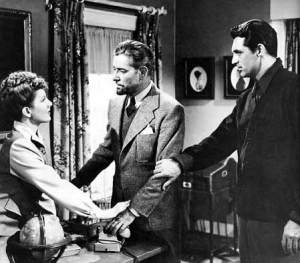 I know some people find “Random Harvest” to be a bit melodramatic, but I completely disagree. This film is so moving that I can’t help but be affected by its poignancy. “The Talk of the Town” is a hard film to classify. Part drama, part comedy, it is the kind of picture that could have trouble finding an audience, yet everyone seems to enjoy this well-blended mix, as well as the great performances from Ronald Colman, Jean Arthur, and Cary Grant. “Wake Island” is a good war movie, and I see how it was nominated upon its release, but there are plenty of other war films that are just as good if not better, so today it becomes a little lost in the shuffle of time. And that (at long last) brings us around to “Yankee Doodle Dandy”. What a film, and what a performance. There is just no arguing that one.
I know some people find “Random Harvest” to be a bit melodramatic, but I completely disagree. This film is so moving that I can’t help but be affected by its poignancy. “The Talk of the Town” is a hard film to classify. Part drama, part comedy, it is the kind of picture that could have trouble finding an audience, yet everyone seems to enjoy this well-blended mix, as well as the great performances from Ronald Colman, Jean Arthur, and Cary Grant. “Wake Island” is a good war movie, and I see how it was nominated upon its release, but there are plenty of other war films that are just as good if not better, so today it becomes a little lost in the shuffle of time. And that (at long last) brings us around to “Yankee Doodle Dandy”. What a film, and what a performance. There is just no arguing that one.
I know what you’re thinking, all of those films are great, perhaps we should just leave the list alone, right?. Well, as great as those ten films are, I think they can be improved some, especially after examining the other releases from 1942. 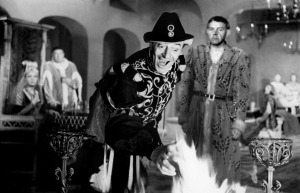 But where to begin? There are some films that offer great performances such as Van Heflin in “Johnny Eager”, Rosalind Russell in “My Sister Eileen”, Joan Crawford in “Reunion in France”, Bette Davis in “Now, Voyager”, or Katharine Hepburn in “Woman of the Year”. In addition to “Yankee Doodle Dandy”, there are some other notable musical films like Bing Crosby and Fred Astaire in “Holiday Inn”, Judy Garland and Gene Kelly in “For Me and My Gal”, Fred Astaire and Rita Hayworth in “You Were Never Lovelier”, and even Bing Crosby and Bob Hope’s classic “Road to Morocco”. And then there were foreign films of note, including Yasujiro Ozu’s “There was a Father” and the amazing “Les Visiteurs du Soir” directed by Marcel Carne. Also, there were a couple of legendary directors who released films in 1942, like Cecil B. DeMille’s “Reap the Wild Wind” and Alfred Hitchcock’s “Saboteur”.
But where to begin? There are some films that offer great performances such as Van Heflin in “Johnny Eager”, Rosalind Russell in “My Sister Eileen”, Joan Crawford in “Reunion in France”, Bette Davis in “Now, Voyager”, or Katharine Hepburn in “Woman of the Year”. In addition to “Yankee Doodle Dandy”, there are some other notable musical films like Bing Crosby and Fred Astaire in “Holiday Inn”, Judy Garland and Gene Kelly in “For Me and My Gal”, Fred Astaire and Rita Hayworth in “You Were Never Lovelier”, and even Bing Crosby and Bob Hope’s classic “Road to Morocco”. And then there were foreign films of note, including Yasujiro Ozu’s “There was a Father” and the amazing “Les Visiteurs du Soir” directed by Marcel Carne. Also, there were a couple of legendary directors who released films in 1942, like Cecil B. DeMille’s “Reap the Wild Wind” and Alfred Hitchcock’s “Saboteur”. 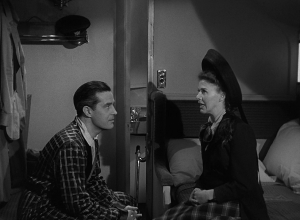 So many great movies… but we’re not done yet. What about Humphrey Bogart, Mary Astor, and Sydney Greenstreet in “Across the Pacific”, or Jean Gabin and Ida Lupino in “Moontide”? How about the Disney animated classic “Bambi”? Lest we forget to include (even if just because we love it so much) the B horror classic, “Cat People”.
So many great movies… but we’re not done yet. What about Humphrey Bogart, Mary Astor, and Sydney Greenstreet in “Across the Pacific”, or Jean Gabin and Ida Lupino in “Moontide”? How about the Disney animated classic “Bambi”? Lest we forget to include (even if just because we love it so much) the B horror classic, “Cat People”.
Even after all of that, it was comedies that were the real highlight in 1942, and they didn’t get too much attention from the Academy either (as usual). Billy Wilder made his American debut with the hilarious “The Major and the Minor”, starring Ray Milland and Ginger Rogers,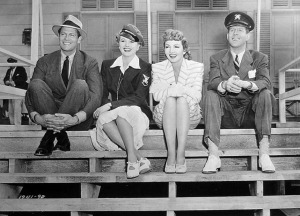 and there was also Rene Clair’s comedic “I Married a Witch”, with Frederic March and Veronica Lake. And then the great Preston Sturges followed up his amazing 1941 (“The Lady Eve” & “Sullivan’s Travels”) with the riotous Claudette Colbert/Joel McCrea picture, “The Palm Beach Story”. The highlight of the comedy world, however, belongs to another brilliant and hilarious director, Ernst Lubitsch. His 1942 film “To Be or Not To Be” is too good for words, and remains today one of the funniest motion pictures of all time. Carol Lombard and Jack Benny are perfect, and I still don’t understand how this film didn’t receive more acclaim upon its initial release.
and there was also Rene Clair’s comedic “I Married a Witch”, with Frederic March and Veronica Lake. And then the great Preston Sturges followed up his amazing 1941 (“The Lady Eve” & “Sullivan’s Travels”) with the riotous Claudette Colbert/Joel McCrea picture, “The Palm Beach Story”. The highlight of the comedy world, however, belongs to another brilliant and hilarious director, Ernst Lubitsch. His 1942 film “To Be or Not To Be” is too good for words, and remains today one of the funniest motion pictures of all time. Carol Lombard and Jack Benny are perfect, and I still don’t understand how this film didn’t receive more acclaim upon its initial release.
It could go without saying that there were enough films to fill two good years in 1942, but now comes the difficult part of narrowing things down to just ten, which incidentally, was harder than I ever expected. I had to make some tough choices, and I am sure that a couple of my decisions will be unpopular, but ten nominees means ten nominees. Here is my list of nominees; the ten best films of 1942.
- “In Which We Serve”
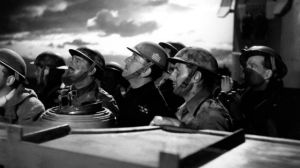
- “Les Visiteurs du Soir”
- “The Magnificent Ambersons”
- “The Major and the Minor”
- “Mrs. Miniver”
- “The Palm Beach Story”
- “The Pride of the Yankees”
- “Random Harvest”
- “To Be or Not to Be”
- “Yankee Doodle Dandy”
Of course, with so many memorable titles, it might be easy to disagree! I, for one, can’t believe that I don’t have room for “Talk of the Town”, “Moontide” or “Now, Voyager”, all of which I thought had a good chance to make the final cut. If only all years were as fantastic as 1942. You can also read more on The Power of Hindsight with my thoughts on 1936, 1954 or 1963.

